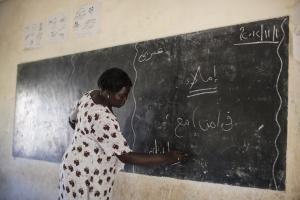Brain Activity and Math in People Who Are Blind

In a recent study, researchers at Johns Hopkins compared brain activity among a group of congenitally blind individuals and a group of sighted individuals—asking all participants to solve a series of math problems and language comprehension tasks. Shipra Kanjlia, a graduate student who was the lead author of a paper resulting from the experiment, noted that “Across all humans, numerical thinking is supported by similar areas in the brain.” This prompted the research question “Does this change in people who have dramatically different perceptual experience—like people who have been blind their whole lives and have never seen the number of people at a party or the number of flowers in a field?”
Researchers were surprised to discover that the participants who were blind were using the same part of the brain for math that is reserved for vision in the brains of people who are sighted. Researchers also noted that the more complex the problem, the more active that region of the brain became. Interestingly, this region of the brain was not active during math tasks for participants who were sighted.
Read the full article: What Math Looks Like in the Mind.
